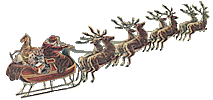little convex; cover it with tin, or, what is of less cost, with tea-led, drawn tight to all
parts of the wood, and tacked on with small flatheaded nails; let it be nailed all on one side, in a striahgt line;
it must be nailed, likewise, round the two ends, but the heads of the nails, and every part must
lie smooth; there must be no points standing out, as they will throw off the fire, and you cannot
raise a charge.
This conductor is to be hung under the chamber, or any other floor over head, on a horizontal line with the
cylinder; or it may be raised higher, in order to hang the conductors: two staples, hooks, or brass rings,
with screws, must be driven or screwed into the conductor, nigh each end, and on the same side. Into these
staples, hooks or brass rings, make the end of a large, long goose-quill fast, by turning the end of the
quill round the ring, &c. and fastening the end back with a strong waxen twine. On the other end of each
quill, make fast any small cord, of sufficent length and strength to support about twenty or thirty pounds
weight. These quills are the best of any thing I could ever discover, to prevent the effluvia
from passing off: It will pass off upon hair, upon silk, and, in damp air, it will pass off upon glass;
but it will never pass upon a clean goose-quill.
The next thing is, to drive another staple, hook or ring, into the under side of the conductor, nigh
the centre: this is to hang a glass to, called the receiver, and will soon be described. The next
thing will be, to prepare a large wire, the bigness of a pipe-stem; one end of which is to be driven into
the centre of one end of the prime conductor, and the other end, being first flatted with a hammer, and with a three
square file cut into three sharp points, is to approach within an eighth of an inch of the surface of
the cylinder, in the centre of the glass: the points are to collect the fire from the glass, as it
is promoted by turning the glass, and the cushion held to the glass at the same time. This wire
conveys the fire to the prime conductor, and the prime conductor will convey it to the receiver, that
is to hang under it. Observe, the wire, just mentioned, and the staple, &c. In the under side of the
conductor, must both touch the lead, which is the coating of the conductor. The wire may be two or three
feet long.
There is nothing more to be done to the conductor, than just to bore a hole on the upper side of it,
as it hangs up, high the centre, in which to place the electrometer: This hath been described,
(vide page 27-28) and need not be repeated.
Receiver. - The receiver, or battery-glass, is that which contains the shock. When it is
charged, the inside is said to be plus-electrified, because it hath more than its natural
quantity of elementary fire: The outside is said to be minus-electrified, because it hath less than
its natural quantity; for the electrical effluvia is drawn off
Continue backward Continue forward


![]() Copyright © 2007, InterMedia Enterprises
Copyright © 2007, InterMedia Enterprises